
Royal Enfield Track School Experience: A Reality Check!
- Feb 25, 2024
- Views : 4410

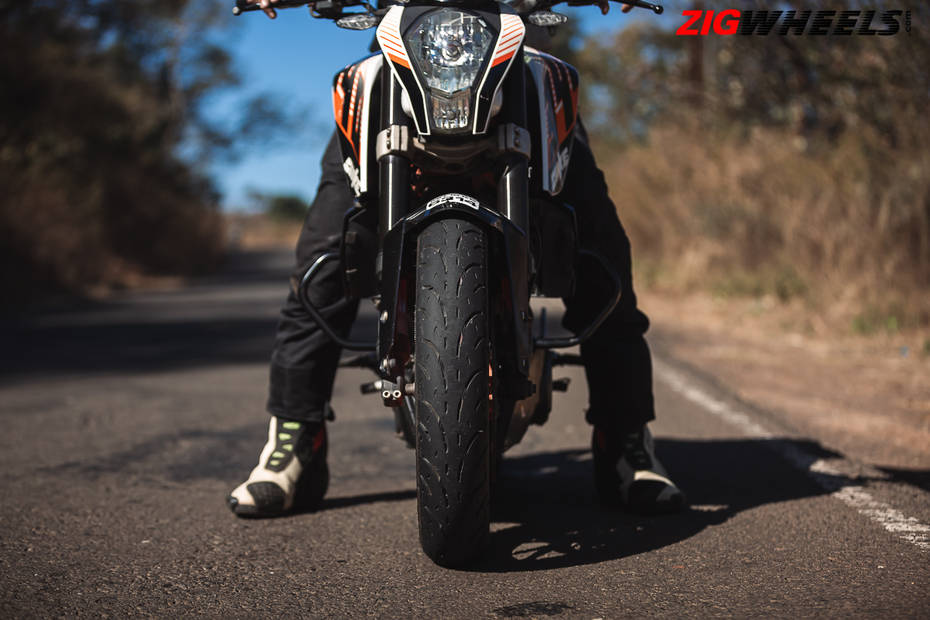
Photography: Kamesh Chauhan
Earlier in 2024, Ceat Tyres launched their latest line of Steel Rad tyres - SportRad, for road uses and CrossRad, for on/off-road use. And a little while after that, Ceat sent us a pair of SportRad tyres to test. These are available in both front and rear - 110/70R17 and 150/60R17 respectively. These sizes make them a direct fit for a whole plethora of Indian sport and naked bikes - ranging from the KTM Dukes (125/200/250/390) to even the impressive Aprilia RS457. I, of course, decided to try them out on my personal 2013 KTM 390 Duke - a 10+ year old bike that was in desperate need of new rubber.
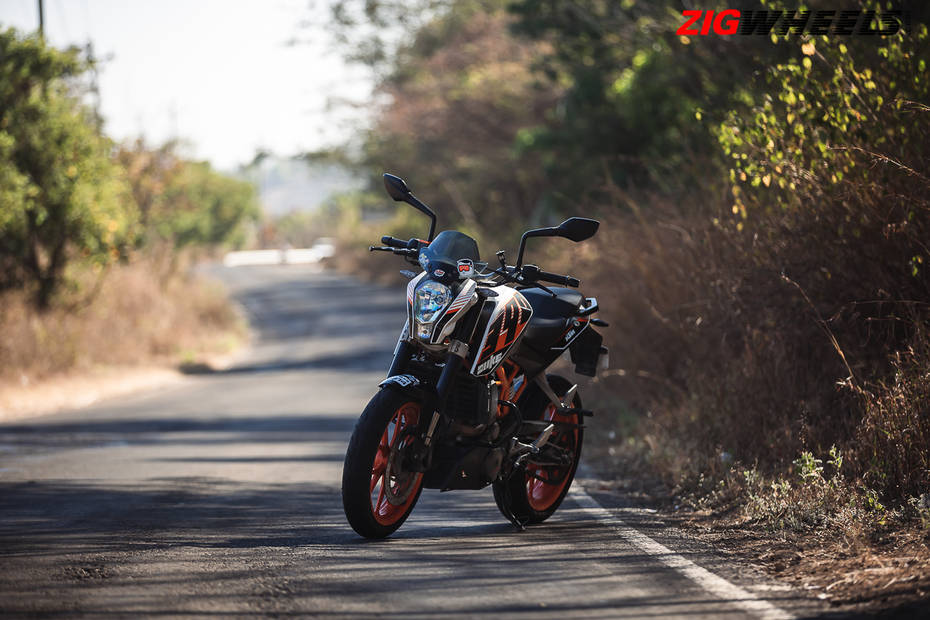
Just a disclaimer; we didn’t purchase these tyres, but they were sent to us by Ceat for free for the purpose of a long-term test. At the time of launch, these were priced at Rs 12,000 for a pair, but now a pair retails for Rs 13,499 (Front: Rs 5,999, Rear: Rs 7,500), although you could find them cheaper at various resellers.
Before we go into how they performed, let’s take a quick look at what these tyres actually are. As mentioned before, these are the latest in Ceat’s Steel Rad line of steel-belted radial tyres, and come with some features that make them great for sport riding. These include slick shoulders which maximise the rubber contact patch on the sides, helping with grip when leaned over, as well as a maximised slick area on the crown (the centre of the tyre), helping with grip in a straight line. The best part here though is that these tyres are W-rated, making them good for speeds of up to 270kmph. Ceat also says that they’ve used a Silica-blended tread compound ensuring a good balance between grip and tyre life.
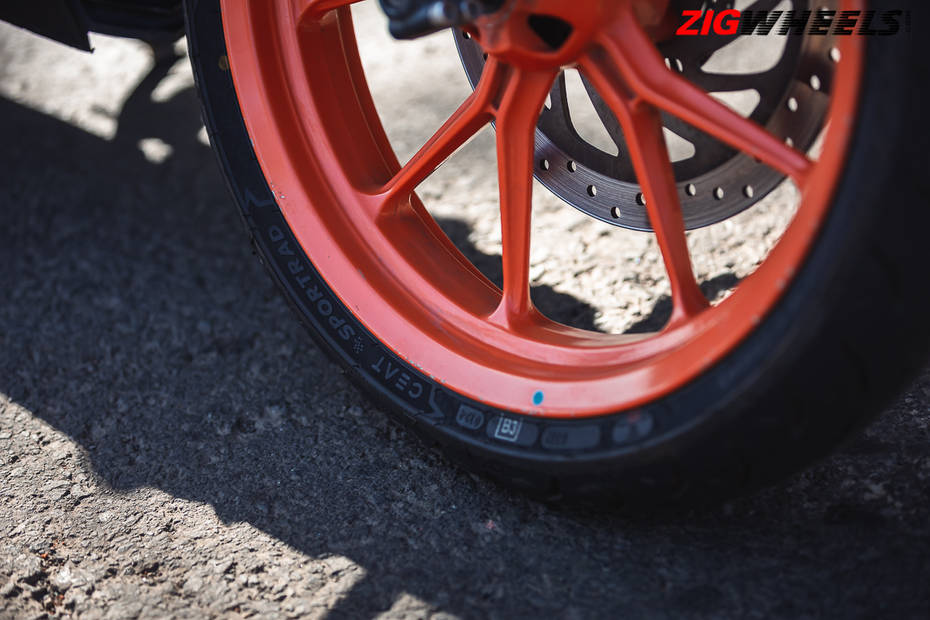
When I got these SportRads installed on my Duke, I had run my previous set of Apollo Alpha H1s almost into the ground. With the SportRad front weighing in at 4.3kg and the rear at 5.3kg, these were much lighter than the Apollos - about 200g for the front and 300g for the rear.

the automobile community
By now, I’ve spent about six months with these tyres riding in various conditions, clocking about 4,000km with them on my Duke. These are my overall impressions so far:
So immediately after installing these new tyres, the steering effort required to change directions on my Duke became significantly easier. Grip levels have been great, regardless of what surface I’m riding on. And Pune’s roads always throw up a mixed bag of surfaces from pristine tarmac, to broken tarmac, to gravel and even massive potholes. But over all these surfaces, the SportRads never gave me any moments, even if I opened the throttle a little too quickly, or braked a little too hard. The latter is especially impressive considering that my Duke’s ABS has stopped working since the last few years, and I haven’t bothered to get it fixed. Heck, there’s so much grip on offer that I’ve found it almost impossible to get the wheels to lock-up during normal, or even faster riding.
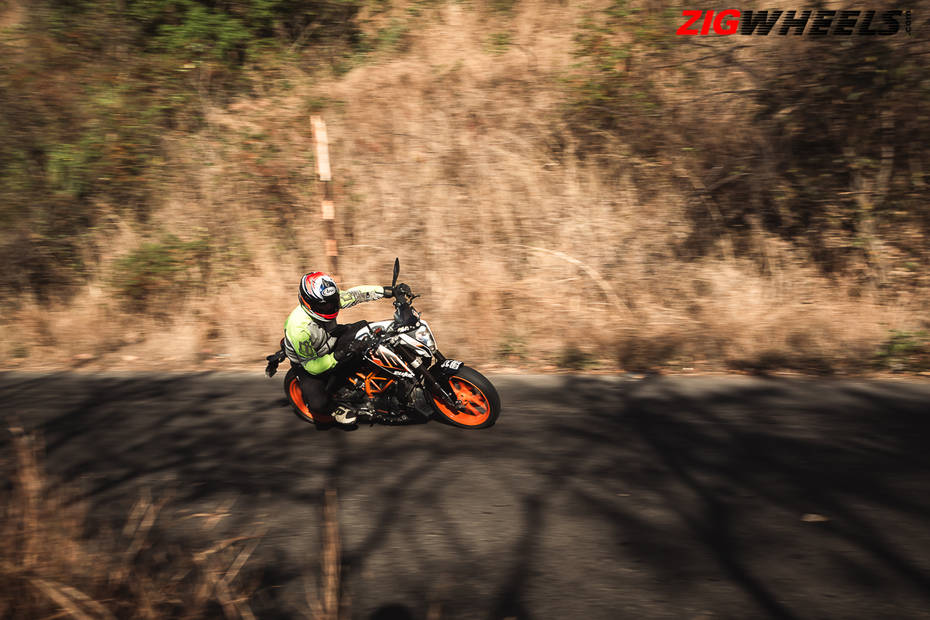
Even through the monsoons, the SportRads have performed admirably, whether it’s on the slippery-as-ice concrete roads after the first spell of rains, or thrashing the bike through large water splashes, as long as I’ve used a modicum of restraint on the throttle and brakes.
The straight-line stability of these Ceat SportRad tyres is commendable too. On longer highway rides, they have made my Duke feel plenty stable even at speeds of 120-140kmph. Even when changing directions at these speeds the tyres have felt entirely composed. While my first-gen Duke isn’t known for its plush ride quality, the SportRads seem to have made small bumps and harsh rumble strips easier to absorb.
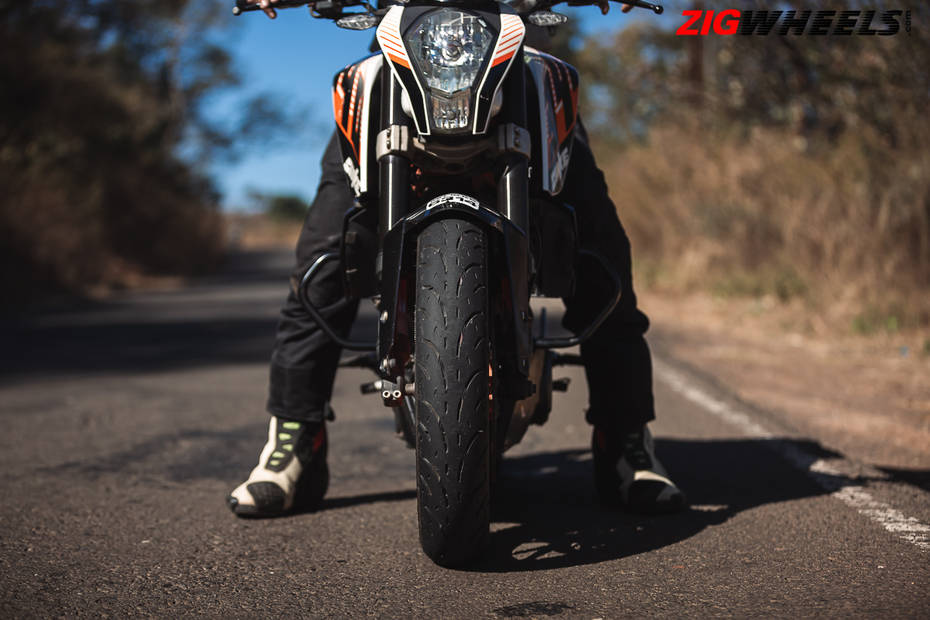
While I would’ve loved to take my Duke with these tyres to a race track for a proper cornering performance test, alas, I haven’t had the chance to do so. So a few stints at Mutha and Lavasa ghats had to suffice. Here, the enhanced edge grip of the SportRads was obvious. Whether quickly changing directions or carrying high lean angles, these SportRads have only been second to the original W-rated Metzeler Sportec M5s that originally came on my Duke. Mid-corner corrections were fairly easy, and especially the SportRad front tyre let me trail brake to my heart’s content when taking on fast and familiar corners of Mutha ghat.
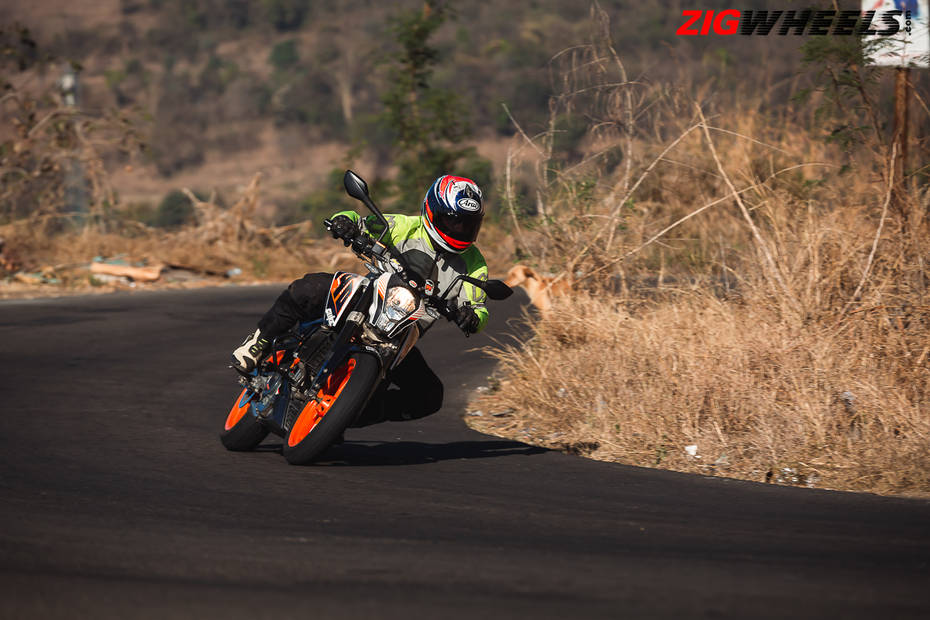
Now, a majority of my use with these tyres has been on my daily commute, a 20-km one-way journey which comprises about 70-percent highway (that is, if you can call the Mumbai-Pune bypass a highway anymore), and 30-percent crowded city streets. On this journey, with the previous Apollo tyres, my bike would average about 22kmpl, with a best of about 23kmpl. The lighter Ceat SportRads have helped increase the mileage of my bike to 25kmpl on most days, and on one tankful, I also saw 27kmpl.
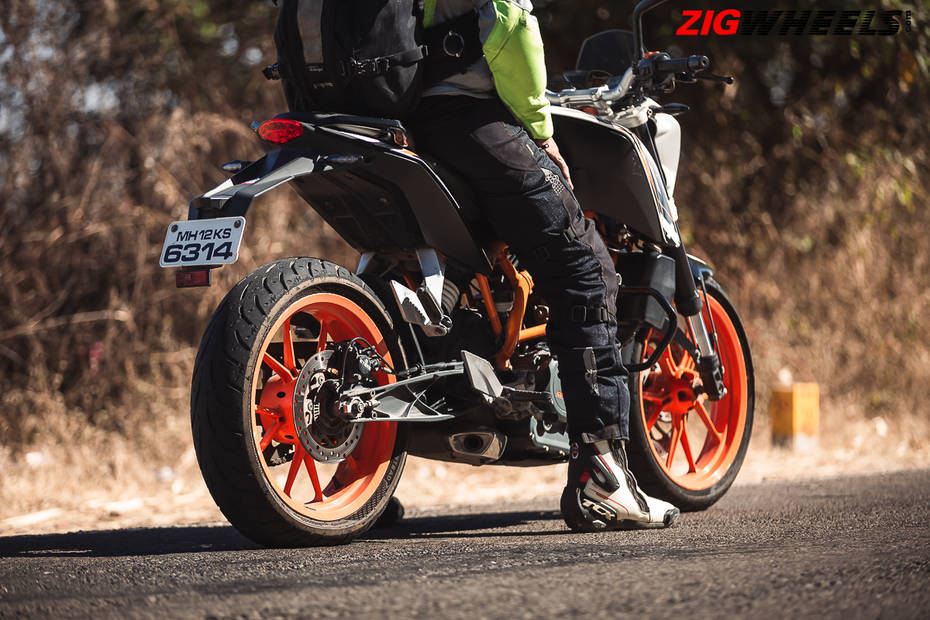
The Ceat SportRads are a noticeable improvement over the stock H-rated Metzelers on the current 390 Duke, and a significant one over the Apollo Alpha H1s which came with the 2023 Triumph Speed 400. However, from personal experience, I can say that they’re closely matched to the TVS Eurogrip PorTorq Extremes that can be found stock on the Aprilia RS457, but I don’t think they’ll be able to match the effortless grip of the Michelin Road 5s from the TVS Apache RR310. Too bad it’s rather difficult to source these Michelins, at least at a reasonable price. Honestly, for me, the Ceat SportRad tyres are a no-brainer if you have a 300-400cc bike and are looking for an OEM replacement.
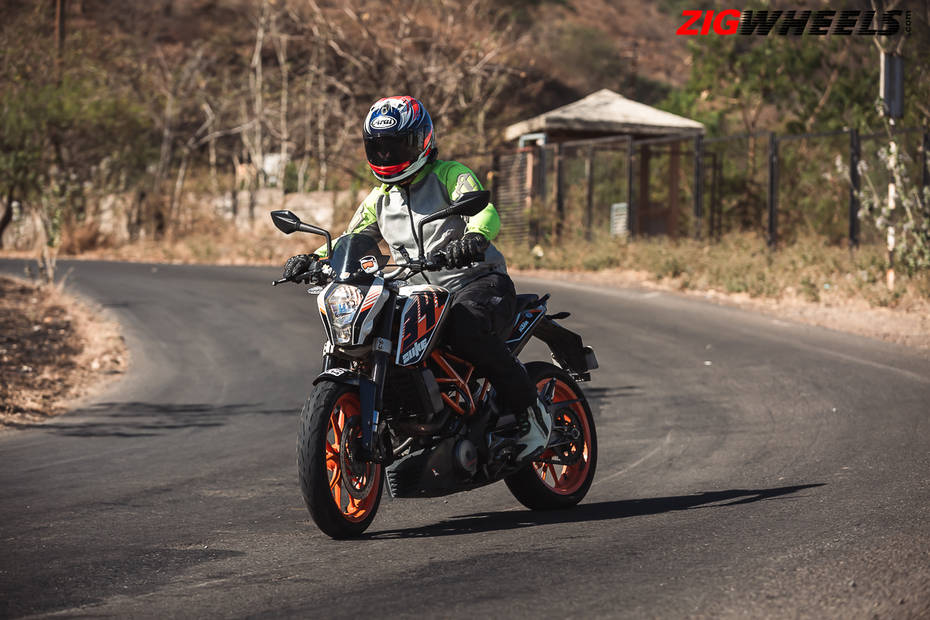
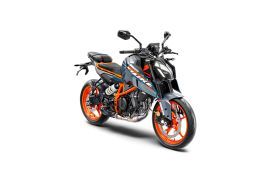

Royal Enfield Track School Experience: A Reality Check!

Royal Enfield Continental GT 650 5500km Long-Term Review: A Difficult...

2023 JK Tyre NRC Round 2: A Thrilling & Fitting Example Of Racing At...

2023 Royal Enfield Continental GT 650 Review: Sweet Shot Of Torque

Royal Enfield Continental GT 650 10,000km Long-term Review: 2 Likes...

Royal Enfield Continental GT-R 650 Media Race Experience: Nearly...

Royal Enfield Continental GT-R650 Ride Experience Feature: A...

2024 KTM 250 Duke Road Test Review: A Dual-personality Streetfighter

California Superbike School (CSS) 2024 - The BEST Motorcycle Riding...
 Royal Enfield Continental GT 650
Royal Enfield Continental GT 650
 KTM 250 Duke
KTM 250 Duke
 KTM RC 390
KTM RC 390
 Royal Enfield Himalayan 450
Royal Enfield Himalayan 450
 Yamaha R3
Yamaha R3
India's largest automotive community
 KTM 200 Duke
Rs. 2.03 Lakh
KTM 200 Duke
Rs. 2.03 Lakh
 KTM 125 Duke
Rs. 1.81 Lakh
KTM 125 Duke
Rs. 1.81 Lakh
 KTM 250 Duke
Rs. 2.25 Lakh
KTM 250 Duke
Rs. 2.25 Lakh
 KTM RC 390
Rs. 3.21 Lakh
KTM RC 390
Rs. 3.21 Lakh
 KTM RC 200
Rs. 2.20 Lakh
KTM RC 200
Rs. 2.20 Lakh